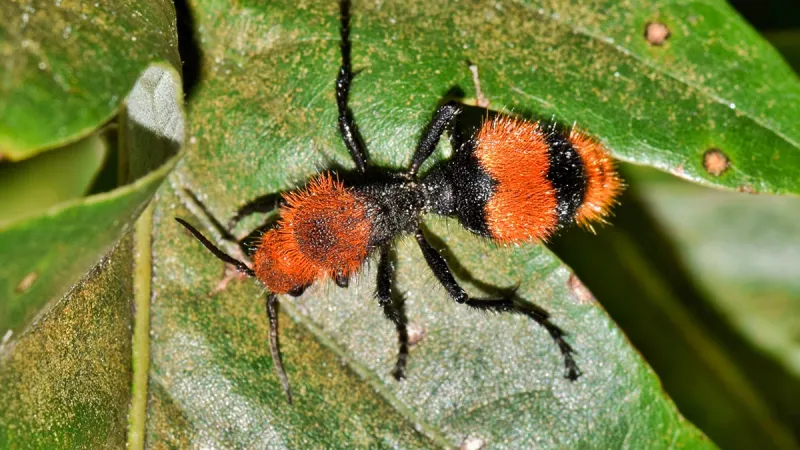
Velvet Ant Information

Velvet Ants
The velvet ant, scientifically known as Dasymutilla spp., is a unique and intriguing insect that often catches the eye with its striking appearance. Despite their name, velvet ants are not actually ants but rather a type of solitary wasp. They are commonly referred to as "cow killers" or "mule killers" due to the reputation of their painful sting. BREDA Pest Management has extensive knowledge of the velvet ant, from their characteristics to their behavior and life cycle, ensuring you receive the best pest control for a velvet ant infestation.
More about Velvet Ants
Velvet ants are small insects, typically measuring between 0.5 to 1 inch in length. They have a distinct appearance, with a velvety and hairy body that can range in color from bright red, orange, yellow, or black, depending on the species. The females are wingless and resemble ants, while the males are winged and have a more wasp-like appearance. This sexual dimorphism is one of the unique features of the velvet ant.
One of the most alarming aspects of the velvet ant is its sting. Females possess a powerful sting that can be extremely painful, earning them their nickname "cow killers" or "mule killers." However, despite their potent sting, velvet ants are generally not aggressive toward humans and prefer to avoid confrontation if possible. Their sting is primarily used for defense against predators or for subduing their prey.
Velvet ants have a notable life cycle. They are solitary insects, with each female digging her own nest in the ground. The female lays her eggs near the nest entrance and then searches for the nests of other solitary bees or wasps. Once she locates a suitable host nest, she enters it and lays her eggs on the host's eggs or larvae. The velvet ant larva will then hatch and consume the host's eggs or larvae as a source of food. This parasitic behavior is known as parasitoidism, and it is an intriguing and unique aspect of the velvet ant's life cycle.
In addition to their unique biology, velvet ants also have interesting behaviors. They are known for their quick and erratic movements, making them challenging to catch or observe in the wild. They are also known for their ability to emit a high-pitched squeaking or hissing sound when disturbed, which is believed to be a form of communication or warning signal.
Despite their unusual appearance and behaviors, velvet ants play a vital role in ecosystems as predators of other insects. They primarily prey on the eggs and larvae of other insects, including bees, wasps, and solitary bees, which makes them important for natural pest control in some ecosystems.
The velvet ant is a unique and enigmatic insect with fascinating characteristics, behaviors, and life cycle. While their sting can be painful, they are generally not aggressive toward humans and prefer to avoid confrontation. Their parasitoid behavior and role as predators in ecosystems make them notable insects worthy of study. However, it is important to appreciate them from a safe distance and avoid handling them to prevent potential stings. If you have velvet ants in your home or around your property, call BREDA Pest Management where we can safely and effectively eliminate these pests from your home.



